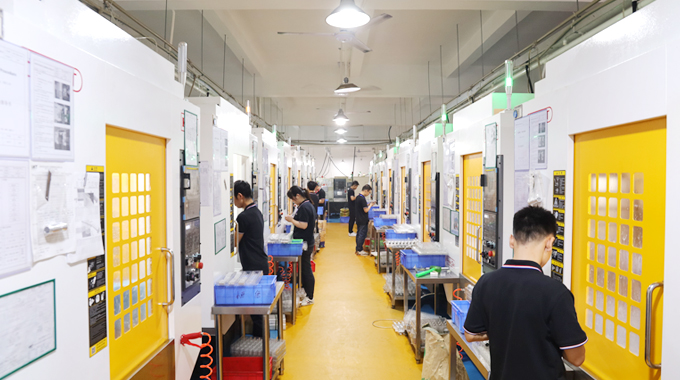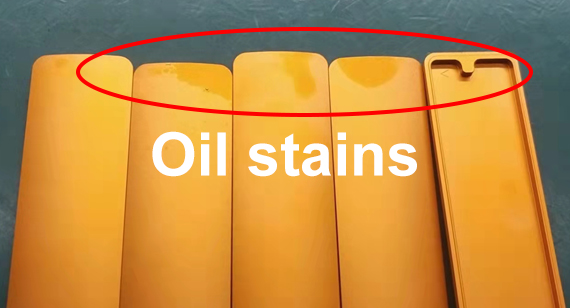CNC machining technology plays an important role in the manufacturing industry and can achieve high-precision and high-efficiency parts manufacturing. However, even if precision-machined parts encounter poor oil contamination during delivery, it will have a negative impact on product image and quality. Therefore, understanding the causes of poor oil staining and finding solutions is crucial to ensuring the quality and appearance of CNC machined parts.

Cause Analysis:
Lubricants during CNC machining: During CNC machining, lubricants are usually used to reduce friction and wear and ensure the quality of the workpiece surface. However, if excessive lubricant or improper lubricant is used during the lubrication process, it may cause it to form an oil film or drip on the surface of the part, resulting in poor oil stains.
Cleanliness of CNC machining environment: The cleanliness of CNC machining environment has an important impact on the quality of parts. If the environment in the production workshop is not clean enough, dust and other impurities may adhere to the surface of the parts during machining and mix with lubricants to form oil stains.
Negligence during transportation and packaging: During parts transportation and packaging, if appropriate protective measures are not taken, such as using clean packaging materials and avoiding direct contact between CNC parts, oil or foreign matter may adhere to the surface of CNC parts.

Solution:
Precisely control the amount of lubricant used: During CNC machining, accurately controlling the amount of lubricant used can reduce the dripping of excess lubricant, ensure complete contact between the lubricant and the surface of the part, and clean up excess lubricant in a timely manner.
Strengthen the cleaning management of the production environment: regularly clean the workshop, especially the CNC machining area, to reduce dust and impurity content in the air. Providing a clean CNC machining environment for the workpiece can minimize the occurrence of oil contamination.
Pay attention to the details of the transportation and packaging process: take appropriate protective measures to avoid oil and foreign matter from adhering to the surface of CNC parts. Use clean packaging materials and ensure that the contact between CNC machined parts and with packaging materials is clean and good to avoid the impact of external factors on the quality of the parts.
The occurrence of poor oil contamination during the delivery of CNC machined parts will have a negative impact on the appearance and quality of the product. By accurately controlling the amount of lubricant used, strengthening the clean management of the production environment, and paying attention to the details of the transportation and packaging process, the phenomenon of bad oil pollution can be effectively solved. These solutions need to be fully implemented and implemented during production and delivery to ensure that CNC machined parts are delivered in good condition.
The development of CNC machining technology has brought many benefits to the manufacturing industry, but the appearance of poor oil contamination during delivery may damage the image and quality of the product. Only by strengthening management measures and paying attention to details can we ensure that the quality and appearance of CNC machined parts when delivered meet the requirements. By accurately controlling the amount of lubricant used, strengthening the clean management of the production environment, and paying attention to the details of the transportation and packaging process, the phenomenon of oil pollution can be effectively prevented and solved. Only in this way can CNC machined parts show the high quality and perfect appearance they deserve when delivered.